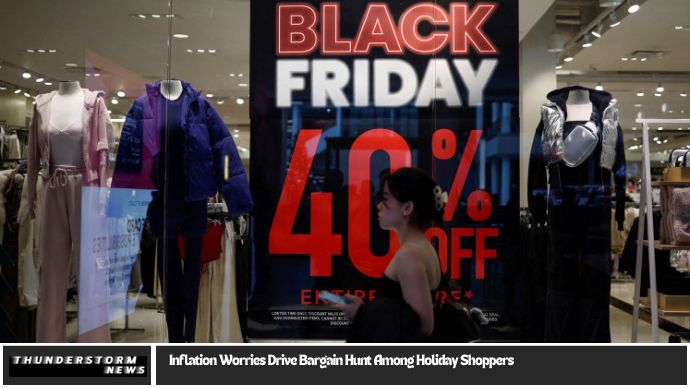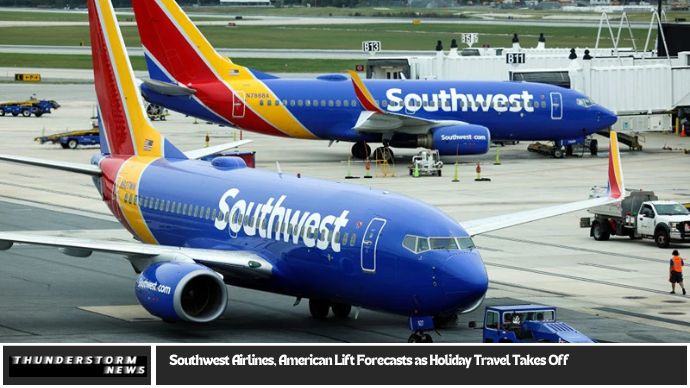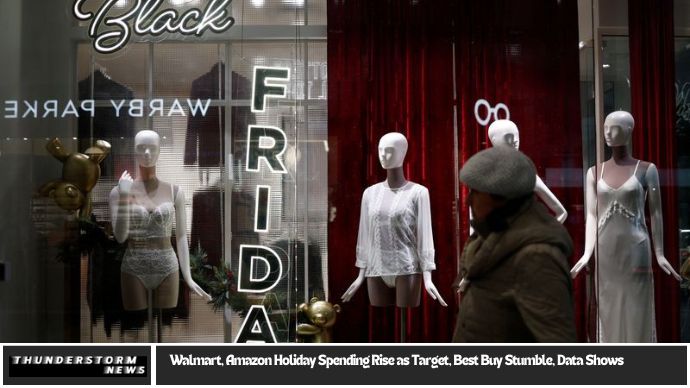As the holiday season approaches, shoppers are not only making lists and checking them twice—they are also checking their wallets more carefully than ever before. Inflation continues to cast a shadow over the economy, leaving many feeling the pinch when it comes to holiday shopping. In response to rising prices, shoppers are looking for ways to stretch their budgets further, often turning to bargain hunting as a way to navigate the financial challenges of the season.
This growing concern about inflation has prompted a shift in how consumers approach their holiday purchases. Many are opting for deals, discounts, and sales more than ever before. Whether it’s for gifts, decorations, or seasonal essentials, shoppers are now on the lookout for savings opportunities. But how can they effectively balance their desire to spread holiday cheer with the need to stay within budget? Let’s dive into the factors driving this trend and how shoppers can maximize their spending power during these uncertain times.
Understanding Inflation’s Impact on Holiday Shopping
Inflation has been a hot topic for months, with its impact felt across nearly every sector of the economy. From gas prices to grocery store bills, inflation affects virtually everything consumers buy. As prices increase, many shoppers are feeling the financial strain, especially when it comes to big-ticket holiday purchases.
What’s interesting is that inflation doesn’t just push prices up—it also influences consumer behavior. With inflation making goods more expensive, shoppers are becoming more discerning. They’re comparing prices, seeking out promotions, and even delaying non-essential purchases. For holiday shoppers, it means navigating through a maze of deals, discounts, and offers to ensure they’re getting the best value for their money.
At the same time, inflation worries have prompted a sense of urgency. Consumers are realizing that waiting too long to make purchases may result in paying even higher prices as the holiday season progresses. As a result, bargain hunting is no longer just a seasonal activity; it has become a strategic approach to getting through an inflationary environment.
How Bargain Hunting Has Grown in Popularity
In response to inflation, bargain hunting has become a key part of the holiday shopping experience. Rather than splurging on expensive, full-priced items, consumers are more likely to scour sale racks, take advantage of coupons, and seek out online discount codes. Whether they’re shopping for gifts or seasonal home decor, they’re making every dollar count.
Part of the appeal of bargain hunting is that it allows consumers to maintain their holiday spending traditions without completely breaking the bank. Sales events like Black Friday, Cyber Monday, and end-of-season clearances have gained even more importance as consumers look to maximize their savings. Online retailers have also jumped on the trend, offering flash sales, discount codes, and free shipping to encourage budget-conscious shoppers to make purchases.
Beyond just looking for traditional sales, consumers are also becoming more savvy in how they shop. They’re using apps and tools to track prices, find the best discounts, and make smarter purchasing decisions. Social media platforms like Instagram and Pinterest are also playing a role in directing shoppers to promotions, helping to spread the word about discounts and sales events in real-time.
How Shoppers Are Navigating Inflation During the Holidays
So, how can shoppers make the most of their holiday purchases without compromising on quality or overspending? First and foremost, it’s important to budget. While it may seem like a no-brainer, creating a detailed budget helps shoppers prioritize their spending and stick to their financial limits. Knowing how much to spend on gifts, food, travel, and decor can help avoid last-minute impulse purchases that can quickly add up.
Next, smart shoppers are using digital tools to compare prices across various stores, ensuring they’re getting the best deal possible. This can mean using comparison websites, checking multiple online retailers, or simply keeping an eye on flash sales and limited-time offers. Many consumers are also embracing early shopping to take advantage of pre-season sales, minimizing the risk of paying inflated prices closer to the holidays.
Moreover, shopping during off-peak times—such as early mornings or weekdays—can provide access to lower prices or exclusive deals. Retailers often offer discounts to customers who shop during non-busy periods, as they aim to spread out sales across the day. By being flexible with timing, shoppers can gain an edge in securing deals before prices rise.
Leveraging Technology to Find Deals
As more people move their shopping online, technology has become a crucial tool in finding the best bargains. Price comparison tools and browser extensions like Honey or Rakuten can alert shoppers when discounts or coupon codes are available, streamlining the process of bargain hunting.
Social media platforms, too, are contributing to the rise of savvy shopping habits. Facebook groups, Instagram influencers, and TikTok videos often highlight the best deals, giving shoppers a sneak peek into where to shop and what to buy. By following deal-focused accounts and staying up-to-date on seasonal promotions, shoppers can ensure they never miss out on the best savings.
Another advantage of online shopping is the ability to access reviews and ratings, helping consumers make more informed choices. With inflation making every dollar count, shoppers are more likely to research products thoroughly before making a purchase, ensuring they’re getting high-quality items at the best possible price.
The Rise of Secondhand Shopping and Sustainable Options
In light of rising prices, many shoppers are also turning to secondhand and refurbished options. This trend has gained significant momentum over the past few years, as thrifting has evolved into a fashionable and sustainable way to shop. Secondhand stores, online marketplaces like eBay, and even local consignment shops offer a wide range of affordable items, from clothing to electronics, all at a fraction of the cost of new products.
For holiday shoppers, this means an opportunity to find unique, high-quality gifts without paying premium prices. Buying secondhand also helps mitigate some of the environmental costs of consumerism, making it an attractive option for shoppers looking to be both financially savvy and socially conscious.
As more consumers seek alternatives to traditional retail shopping, secondhand marketplaces have seen a surge in activity. For those who are willing to look, the potential to find great bargains, unique items, and limited-edition pieces is greater than ever before.
How to Make the Most of Holiday Sales and Promotions
To make the most of the holiday season’s sales and promotions, shoppers must approach their purchasing decisions with a strategic mindset. One effective way to do this is by signing up for newsletters or loyalty programs that give access to exclusive deals, early bird sales, and personalized offers. Many stores reward loyal customers with discounts or early access to holiday sales, making it an excellent way to stretch a budget further.
Timing is also crucial. While major events like Black Friday and Cyber Monday are known for discounts, it’s important not to overlook smaller sales events that happen throughout the season. Retailers often offer post-holiday sales, clearance events, or “flash sales,” which can provide opportunities for shoppers to find deals at even better prices after the peak shopping period has passed.
Lastly, don’t underestimate the power of negotiation. While haggling may seem outdated, some retailers are open to offering additional discounts, especially if you’re buying multiple items or making a large purchase. It never hurts to ask for a better price, especially if it means saving money during the holiday season.
May you also like it:
Walmart, Amazon Holiday Spending Rise as Target, Best Buy Stumble, Data Shows
Elon Musk Says It’s ‘Pointless’ to Build a Human-Driven $25,000 Tesla
Simplifying Crypto: Take Ownership of Your Financial Future with Crypto ki Paathshala
FAQs
1. Why are shoppers so focused on bargains this year?
Shoppers are focused on bargains due to inflation, which has caused prices to rise across many sectors, making it more important to stretch budgets without sacrificing quality.
2. How can I save money during the holiday season?
Start by creating a budget, comparing prices, using coupon codes, and shopping early or during off-peak times to maximize savings.
3. Is online shopping better for finding bargains?
Yes, online shopping offers many tools, such as price comparison sites, discount codes, and reviews, which help consumers find the best deals.
4. Are secondhand gifts a good idea?
Yes! Secondhand gifts are affordable, unique, and often sustainable, making them an excellent choice for shoppers on a budget.
5. When is the best time to shop for holiday deals?
Shopping early, during off-peak hours, or taking advantage of flash sales can help you snag the best deals before prices rise.
6. How can I negotiate prices during sales?
If you’re buying multiple items or making a large purchase, don’t hesitate to ask for a better deal or additional discount. Many stores are open to negotiation.
Conclusion
As inflation continues to challenge holiday shoppers, the hunt for bargains has become more important than ever. By adopting smart shopping strategies, leveraging technology, and embracing secondhand options, consumers can enjoy the festivities without worrying about their finances. Whether you’re browsing online, visiting local thrift stores, or shopping during off-peak hours, there are plenty of ways to make your holiday budget go further. Keep your eyes open for deals, be strategic with your purchases, and enjoy a holiday season that’s both joyful and financially savvy.






